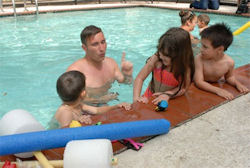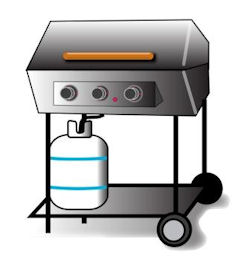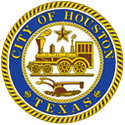Houston Fire Department
Summer Safety Tips

Heat Related Medical Emergencies
The Houston Fire Department reminds citizens about the importance of taking safety measures when outdoors to avoid heat-related medical emergencies, this also includes making sure caregivers "Look Before They Lock" for children left in vehicles. Also remember that pets should never be left in a vehicle on a warm or hot day.
Before conducting outdoors activities and feeling thirsty, drink plenty of water and electrolyte-replacement beverages. Avoid beverages or food sources with caffeine, alcohol or large amounts of sugar because these can actually result in the loss of body fluid.
Most popular sodas contain high levels of sugar and should be avoided when conducting strenuous activity. Avoid drinking alcohol the evening before conducting strenuous exercise as alcohol increases .
Conduct outdoor work or exercise in the early morning or evening when it is cooler. Individuals unaccustomed to working or exercising in a hot environment need to start slowly and gradually increase heat exposure over several weeks. Take frequent breaks in the shade or in an air-conditioned facility.
A wide-brimmed, loose-fitting hat that allows ventilation helps prevent sunburn and heat-related emergencies. A tight-fitting baseball cap is not the best choice when conducting strenuous outdoors activities. Sunscreen also helps protect injury from the sun's rays and reduces the risk of sunburn.
Wear lightweight, light-colored, loose-fitting clothing that permits the evaporation of perspiration. Do not leave children, senior citizens or pets unattended in a vehicle.
Common Heat-Related Medical Emergencies
- Heat cramps - Heat cramps are muscle pains or spasms that typically occur in the abdomen, arm, and legs in association with strenuous activity. If you have heart problems or are on a low sodium diet, get medical attention for heat cramps. If medical attention is not necessary, take these steps: Stop all activity, and sit quietly in a cool place, Drink clear juice or a sport drink , Do not return to strenuous activity for a few hours until after the cramps subside because further exertion may lead to heat exhaustion or stroke. Seek medical attention for heat cramps if they do not subside in one hour.
- Heat Exhaustion - Heat exhaustion is the body's response to an excessive loss of water and salt contained in sweat. Signs include profuse sweating, paleness, muscle cramps, weakness, dizziness, headache, nausea or vomiting, a weak-but-rapid pulse and fainting. The skin may be cool and moist. If heat exhaustion is untreated, it may progress to heat stroke.
- Heat Stroke - Heat stroke occurs when the body's temperature rises rapidly, the sweating system fails, and the body is unable to cool down. Body temperature may rise to 106°F or higher within 10 to 15 minutes. Heat stroke can cause death or permanent disability if emergency treatment is not given. Heat stroke symptoms include an extremely high body temperature (above 103°F, orally), red, hot and dry skin (no sweating), rapid and strong pulse, throbbing headache, dizziness, nausea, confusion and unconsciousness.
Pool and Water Safety
 Active, focused, adult supervision is the most important safety measure to prevent a water-related tragedy involving a child. The vast majority of children who drown in pools do so in the backyards of their own homes or of relatives.
Active, focused, adult supervision is the most important safety measure to prevent a water-related tragedy involving a child. The vast majority of children who drown in pools do so in the backyards of their own homes or of relatives.
- NEVER leave a child alone near water
Always watch your children around swimming pools - Use approved flotation devices
- If your apartment has a pool, inspect the fence and gate. If the gate does not lock or you find any other defects with the fence, report it to the apartment management immediately.
- Bring a cell phone to the pool in case of emergency
- Make sure there is no standing water on the pool deck.
- Standing water is the #1 cause of slips and falls around a pool. NO RUNNING on the pool deck!
- Enroll children over the age of 3 in swimming lessons taught by qualified instructors.However, swimming lessons don't make your child "drown proof." Remember, flotation devices are not a substitute for supervision.
- REMEMBER- Swimming lessons do not make your child "Drown-Proof"!
- Always have a first aid kit and emergency contacts handy
- Watch for dangerous "TOOs"- Too Tired, Too Cold, Too Far from Safety, Too Much Sun, Too Much Strenuous Activity
- Pay attention to local weather conditions and forecasts. If lightning and thunder are nearby, get out until the storm has passed.
Teach Children these safety tips:
- Always swim with a buddy
- Don't dive into unknown bodies of water. Jump in feet first to avoid hitting your head on the shallow bottom.
- Don't push or jump on others in or around water
- Swim in supervised areas only
- Obey all rules and posted signs
HFD also recommends parents and guardians learn CPR. Seconds count if a person drowns and performing CPR quickly and correctly can save their life. For more information on local CPR classes, please contact the American Red Cross , your local hospitals or medical schools.
Finally, be prepared in case of an emergency. Keep rescue equipment and a phone next to the pool. Learn cardiopulmonary resuscitation (CPR).
Fences and walls should be at least four-feet high and installed completely around the pool. Gates should be self-closing and self-latching. The latch should be out of reach of small children.
If a house forms one side of the barrier for the pool, doors leading from the house to the pool should be protected with alarms that sound when the doors are unexpectedly opened. Or, use a power safety cover, a motor-powered barrier placed over the water area, to prevent access by young children. For above-ground pools, steps and ladders to the pool should be secured or removed when the pool is not in use.

Barbeque Grill Safety Tips
Although the City of Houston Fire Code prohibits all open-burning within the Houston City Limits at all times the Houston Fire Department would like to remind citizens to be extra vigilant in activities that may lead to accidental fires, including improper use of a barbeque pit or improper disposal of barbeque coals, ashes or briquettes and carelessly discarded smoking materials.
Portable barbecue pits, charcoal grills and other open-flame cooking devices outside of a building should not be operated on combustible balconies or located within 10 feet of combustible walls or roofs or other combustible materials.
When igniting the barbecue charcoal, citizens should use a charcoal lighter, not gasoline. Gasoline can flash violently in and around the pit causing serious injuries to anyone in the area of the flash. A fire extinguisher or charged garden hose should be handy while the fire is burning. Check the pit frequently to insure that it is okay.
Hot ash and coals from barbecue pits and charcoal burners should be placed in a non-combustible container until cooled or thoroughly saturated with water, before being disposed of.

